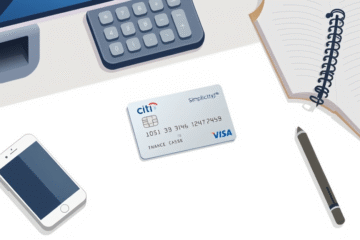An Emergency Fund is a crucial component of financial planning that helps safeguard your future.
Building a robust financial safety net requires careful planning and dedication to protect against life’s uncertainties.
Understanding how to create and maintain an effective emergency fund is essential for achieving long-term financial stability and peace of mind.
In this comprehensive guide, we’ll explore the key steps to establishing a reliable emergency fund that can serve as your financial backbone during challenging times.
The Importance of an Emergency Fund
Having an emergency fund is a necessity for maintaining financial stability. It acts as a safety net, providing security during unforeseen events that can disrupt your finances.
An emergency fund prevents you from relying on high-interest loans or credit cards during challenging times. It offers peace of mind by knowing funds are available when needed.
Key topics covered will include:
- Significance of an emergency fund for avoiding debt and staying financially secure
- Steps to establish a reliable fund quickly and efficiently
- Common misconceptions surrounding the difficulty of maintaining an emergency fund
- Reassurance that it is easily achievable with commitment
Transition into the next section by understanding the crucial role of emergency funds. According to NAB, an emergency fund is a financial safety net offering instant access to money for unplanned expenses.
As you delve deeper, recognize the practical steps to building a robust emergency fund.
Determine Your Monthly Expenses
Calculating your monthly expenses is crucial for establishing a solid financial foundation, especially when creating an emergency fund. Begin by listing both fixed and variable expenses. Fixed expenses are consistent monthly costs, such as rent, mortgage, and insurance. Variable expenses fluctuate, including groceries, utilities, and entertainment. Use a detailed table to differentiate these two categories effectively.
| Category | Fixed Expenses | Variable Expenses |
|---|---|---|
| Housing | Rent/Mortgage | Maintenance/Repairs |
| Utilities | Internet | Electricity |
| Food | Subscription Services | Groceries |
Accurate tracking of expenses is essential to avoid discrepancies. Consider using the Mint App, which offers a seamless budgeting experience. With Mint, you can easily categorize expenses, set budgets, and receive alerts on overspending.
Incorporate regular checks of bank statements and organize receipts. This ensures you have a holistic view of your spending habits. Implementing strategies like categorizing, tracking, and using a reliable tool can make budgeting more effective.
Utilize other online calculators like NerdWallet for enhanced accuracy. These tools provide insights and suggest areas for savings. Regularly review and adjust your budget based on lifestyle changes, ensuring your financial goals remain attainable.
Set a Clear Savings Goal
To define a realistic savings goal for your emergency fund, consider several key factors.
Start by evaluating your steady income source to ensure a consistent contribution to your savings. Understanding your monthly earnings provides you with a firm foundation.
Next, calculate your necessary monthly expenses.
This could encompass rent or mortgage, utilities, groceries, and other non-negotiable outlays that regularly occur. Understanding your expenses is crucial to avoid overestimating your savings capacity.
Identify your desired total savings amount.
A common recommendation is to aim for three to six months’ worth of expenses. For example, if your monthly living cost totals $3,000, aim for a savings goal between $9,000 and $18,000.
- Income: $4,000 per month
- Expenses: $3,000 per month
- Desired Savings: 6 months of expenses
- Calculation: 6 x $3,000 = $18,000
This calculation establishes concrete steps towards your savings goal while ensuring sustainability.
Use automated transfers to ensure regular contributions effortlessly.
Choose the Right Investment Option
In considering where to place your emergency fund, liquidity and risk factors play essential roles. High-yield savings accounts offer reliable accessibility with a reasonable interest rate, providing steady returns.
Money market accounts typically offer slightly higher returns than regular savings accounts while maintaining strong liquidity, making them a popular choice for many investors.
Short-term investments like Treasury bills and government bonds are other safe options, although their liquidity may not be immediate.
To aid decision-making, here’s a brief table comparing these options:
| Option | Liquidity | Risk | Return |
|---|---|---|---|
| High-yield Savings | High | Low | Medium |
| Money Market | Moderate | Low | High |
| T-bills/Bonds | Low | Very Low | Variable |
Ultimately, choosing the best investment depends on individual needs and preferences. Factors like risk tolerance, financial goals, and the need for accessibility should guide your decision. Ensure to continually assess and adjust your investment portfolio as circumstances change to maintain and maximize your emergency fund.
Consistent Contributions Are Key
Consistently contributing to your emergency fund is essential for financial security. Strategies to build emergency funds should emphasize automation, ensuring regularity in contributions.
Even small, consistent savings can accumulate over time to provide significant financial cushions.
Regular savings illustrate how small amounts grow substantially, reinforcing the importance of steady contributions.
For example, use visuals like graphs to demonstrate the accumulating power of saving consistently over time.
Automating contributions helps in maintaining this habit effortlessly by setting up automatic transfers.
Secure your emergency fund by following these practical tips: Start with a savings account, determine contributions, and automate them to ensure regularity.
Consistency converts saving into a structured habit, making it part of your monthly budget planning.
The key is to treat saving as a necessary financial obligation, akin to a bill that demands attention.
Implement these strategies to ensure long-term financial safety and resilience against unexpected costs.
Achieving Peace of Mind and Financial Security
An emergency fund is a cornerstone of achieving both peace of mind and financial security. With a dedicated reserve of cash set aside in case of unexpected expenses, individuals are freed from the anxiety of potential financial disruptions.
This proactive financial management strategy allows people to handle unforeseen expenses such as medical bills or job loss, without resorting to high-interest debt. This approach acts as a safety net, providing financial security during challenging times.
The emotional benefits include reduced stress, knowing you have the ability to tackle emergencies without borrowing. Financial experts agree, stating, “An emergency fund empowers individuals with the freedom to make better financial decisions.”
Moreover, having an emergency fund signals stability to loved ones and colleagues. It says, “I’m prepared and capable of handling life’s uncertainties.” As financial expert Dave Ramsey advises, “An emergency fund is like the financial breath of fresh air everyone needs.”
Embrace the confidence that comes with knowing you’re equipped to face life’s unpredictable challenges with determination and financial security.
Creating an emergency fund is not just about saving money; it’s about securing your financial future.
By following these steps and maintaining discipline in your savings approach, you’ll build a reliable safety net that provides peace of mind and financial stability.



0 Comments